Some TCM doctors ask you to stick out your tongue, what does he want to see?
Whenever you go to see a Chinese medicine practitioner, looking at the tongue is a must, and for Chinese medicine practitioners, learning to look at the tongue is a must, so what exactly is the purpose of looking at the tongue, and is it really a must?
Follow Helpful Tap in the upper right corner to push interesting and knowledgeable articles to you every day!
Looking at the tongue, also called tongue diagnosis, is a discipline of Chinese medicine
Chinese medicine believes that each place of the human tongue corresponds to a certain organ of the body, by observing the specific color of the tongue, the symptoms, you can roughly analyze where the body has problems, combined with other symptoms of the body, you can accurately determine the specific cause of the disease.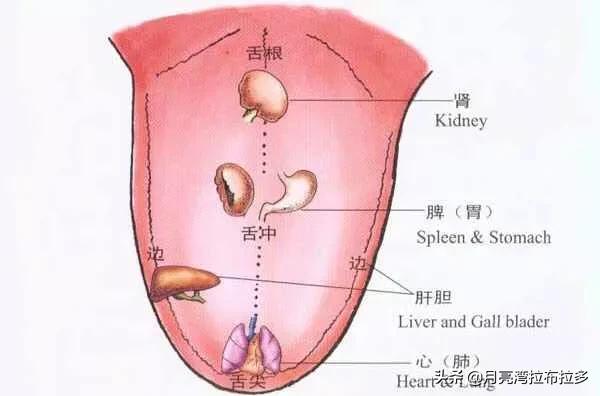
Tongue diagnosis is an important point of observation in looking and smelling, Chinese medicine believes that the tongue is the external manifestation of several organs, the tip of the tongue responds to the heart and lungs, the root of the tongue responds to the kidneys, the middle of the tongue is the spleen and stomach, and the edge of the tongue is the gallbladder.
The state and color of different tongues reflect different diseases
Traditional Chinese Medicine (TCM) uses tongue diagnosis to determine if there is any disease in the body or exactly where a problem has arisen. Currently, most of the diagnosis is done through tongue diagnosis and pulse cutting, mainly to determine the problems of the spleen and kidneys, as most people are currently suffering from a deficiency of the spleen and kidneys.

The color of a normal person's tongue is light red, and the tongue surface is distributed with granular uniform light white dots, which are tongue moss, so a normal person should have a light red tongue with thin white moss.
And some people, especially women, who have bruises on the sides of their tongues are usually suffering from gynecological problems. And if there are teeth marks on the edges of the tongue, regardless of gender, it is a sign of heavy dampness.
If there are cracks on the tongue, according to the depth of the cracks or the color of the tongue, to determine the severity of the disease. However, cracked tongue is usually a symptom of yin deficiency and needs to be analyzed specifically because the location, shape and direction of the cracked tongue reflect different problems, such as herringbone lines are usually a symptom of stomach fire, but if the color is red, it is a manifestation of fire entering the heart.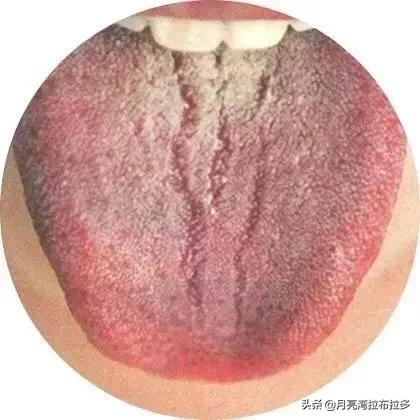
Having said that, the main point is that the tongue can react to a wide range of diseases in the body and is an outward manifestation of disease.
What is the most common symptom in response to dentate tongue by far?
Because of diet and irregular lifestyle, many people will have symptoms of spleen deficiency, in the hot summer, the air conditioning blowing too much is particularly easy to heavy moisture, and heavy moisture on the tongue is the manifestation of tooth marks tongue.
When one has a dentate tongue, one should also analyze for other symptoms such as habitual diarrhea and unformed stools.
When the spleen is deficient in dampness, the spleen can not transport water in time, it will gather in the tongue out of the tongue, the tongue is swollen and squeezing the teeth, the teeth mark tongue is so come~
Tongue diagnosis is the main way for Chinese medicine practitioners to determine diseases and their specific causes, so every qualified Chinese medicine practitioner will use tongue diagnosis to determine the cause of the disease, and look and smell to analyze the cause of the disease and the symptoms.
Please follow me if you like, help to like me, and push interesting and knowledgeable articles to you every day!
Some TCM doctors ask you to stick out your tongue, what does he want to see?
Tongue diagnosis is the main content of diagnosis in Chinese medicine, and it is also one of the characteristics of Chinese medicine diagnosis. Different areas of our tongue represent different internal organs of our body.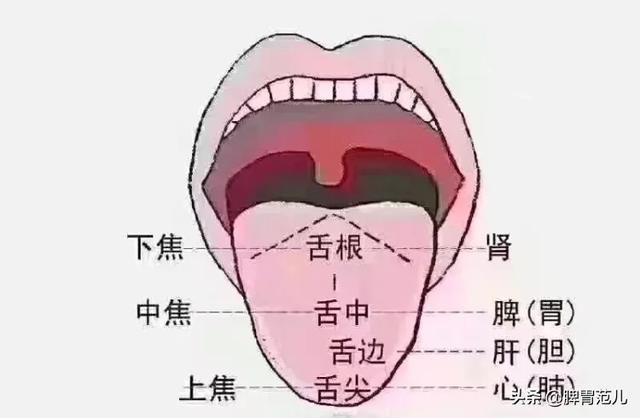
The tip of the tongue is the tip of the tongue, which generally reflects the heart, the middle part of the tongue reflects the function of the middle Jiao, that is, the spleen and stomach, and the sides of the tongue are the liver and gallbladder.The root part of the tongue is our lower jiao (kidneys, bladder, etc.) "Looking at the quality of the tongue, one can observe the emptiness of the five organs; analyzing the tongue moss, one can observe the depth of the six obscenities," then the tongue can reflect a lot of problems in our body, and through tongue diagnosis, one can be more certain of the type and location of the disease.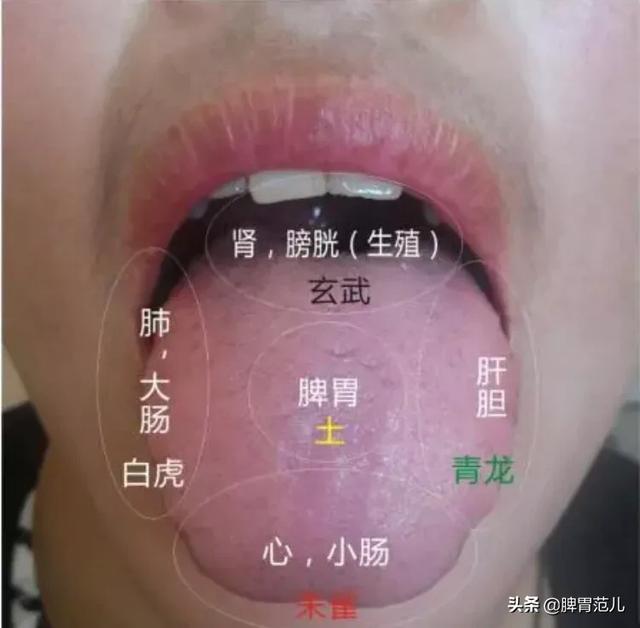
And many times the changes of the tongue will appear before the symptoms and diseases, so if you observe abnormalities of the tongue, in addition to some physiological factors, it is likely to be the precursor of some critical diseases.
I often share about the spleen and stomach in my headlines, and by observing the tongue, you can tell how healthy a person's spleen and stomach are.
So what kind of tongue signs would a person with a deficient spleen exhibit?
The biggest feature of the tongue of a person with weak spleen and stomach is that the tongue is fat, the tongue is heavy with water-dampness, and the edge of the tongue has traces of teeth. This is because the spleen and stomach are weak and thick and can't transport water-dampness, and the water stays in the body and the tongue becomes fat, and the fat tongue and the teeth are squeezed, which makes the tongue edge appear with traces of teeth.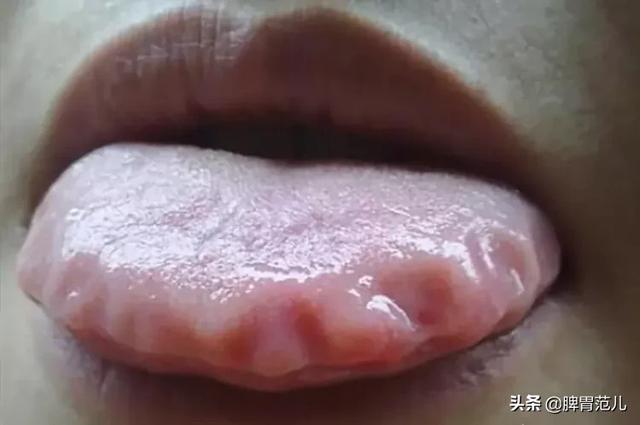
When looking at the tongue you can also look at the tongue coating, which in a healthy person has a layer ofPale, moist thin white moss, not dry or slippery;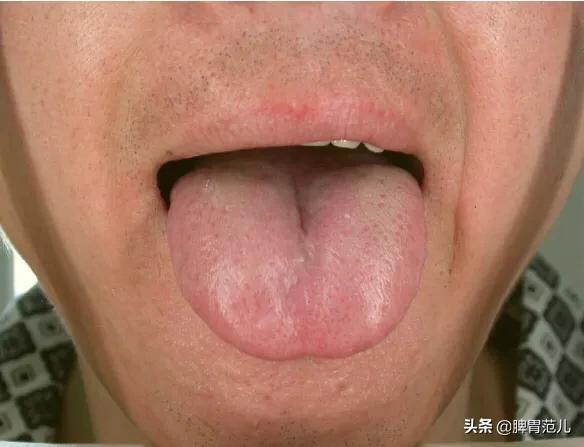
If the tongue moss is yellow, then it means that there is heat in the body; the tongue moss is burnt yellow, which means that the heat in the body is prevalent the tongue moss is white which means that there is cold in the body, and the tongue moss is black which means that the cold in the body is prevalent; at the same time, if the tongue moss is thick and greasy, and it is full of white moss, then it means that the spleen and stomach are relatively weak.
Follow me! Bringing you the right way to nourish your body and improve your spleen deficiency! Share the dry goods of spleen nourishment!
There is an auxiliary diagnostic method in TCM diagnosis - tongue diagnosis. Some people also use it as part of "diagnosis by observation", both are possible. The basic principle of tongue diagnosis is that the tongue contains the secrets of the five organs and six viscera. The tip of the tongue is the heart and lung area, the middle of the tongue is the spleen area, the root of the tongue is the kidney area, and the sides of the tongue are the liver and gallbladder. Doctors will be through the tongue color, obesity, tongue moss how much to determine the condition of the five organs and six viscera changes. Of course, this judgment is one-sided. But also through the "look, smell, ask and cut" and comprehensive diagnosis of the disease. This principle is also the ancient people in the fight against disease summarized. That is, the modern biology of "holographic" technology theory.
Thanks to the little secretary for the invitation!
Chinese medicine practitioners can judge some diseases by looking and sniffing, for example, by abnormalities of the tongue coating.
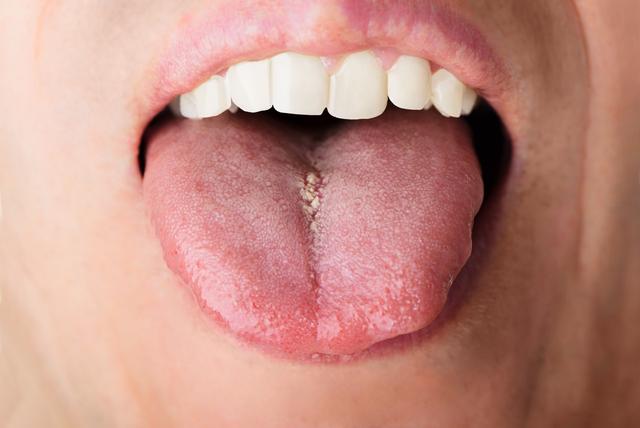
Some TCM doctors ask you to stick out your tongue, what does he want to see?
The main reason for the change of diseases through tongue coating is that the meridians of the tongue are interconnected with the five organs, so the deficiency of the organs and the performance of qi and blood of a person will be directly and objectively reflected on the tongue coating. Generally speaking, Chinese medicine practitioners can judge diseases by the change of tongue coating as well as its color and shade. Different judgments can be made through tongue coating, tongue body and tongue texture.
What do all the clinical abnormalities of the tongue mean?
1. Swelling of the tongue
Entity if there is obvious distension, then it is likely that the spleen and stomach have problems, in Chinese medicine, if there is too much dampness, it is likely to cause localized distension, that is, the internal storage of water and dampness. This situation is usually caused by spleen deficiency, because the spleen is the main transportation, all the dampness in the body needs the spleen to carry out the transportation conditions, if the function of the spleen is weak, then the loss of the problem will be more and more serious.
2、Tongue body is thin and small
The opposite of a distended tongue is a thin tongue, which is also a sign of weakness of the spleen and stomach. At this time, the digestion and absorption function of the spleen and stomach is relatively weak, usually caused by a long illness of the body, so the tongue appears to be thin. This situation of spleen deficiency, not only the transport function problems, for the absorption of nutrients and physical condition will have an impact.
3. Stiffness
If there is obvious stiffness on the tongue, then it is often caused by stagnation of the veins and channels. At this time, when the blood flow in the heart veins is not smooth, it is likely to affect the local limb movement, which also causes the symptom that the tongue is stiff and unable to move freely. At this time, the color on the tongue usually becomes reddish red, and there will be obvious stiffness.
4. Cracks appear
If there are obvious cracks on the tongue, it is usually not a damage to the tongue, but a deficiency of fluid, at this time the patient is usually a serious deficiency of yin symptoms. The body's fluid is seriously depleted, and it is easy to cause the tongue to have cracks.
5、Mirror tongue
This is a more typical kind of tongue, that is, the tongue is as smooth as a mirror, usually no tongue moss on the surface of the tongue, and can not clearly see the papilla of the tongue, mainly has appeared in the manifestation of the atrophy of the papilla of the tongue, at this time is usually a long time disease, serious illnesses can easily lead to a mirror shot, and the patient has a serious deficiency of yin and fire.
Chinese medicine practitioners to carry out tongue diagnosis is not without basis, this is generally based on long-term experience in Chinese medicine to carry out a method of disease judgment, now look at the tongue to diagnosis, not only Chinese medicine practitioners will do, there are certain modern medical doctors have also begun to help confirm the diagnosis of the disease based on the tongue.
Sticking out my tongue to see a doctor is not new to me, because my father is a Chinese medicine practitioner, every time I was sick when I was young, I would tell my father where I was sick, and my father would let me stick out my tongue and show it to him, and then he would stretch out his hand and let him take my pulse, and in just two to three minutes, my father would tell me what medicine I should take. Therefore, I have always thought that Chinese medicine is very magical, for the problem can be solved by looking at the tongue and taking the pulse!
So what exactly is the mystery of the tongue, and why is he able to tell the problems of the five organs and six bowels? Through my father's teachings, university studies, and more than ten years of clinical practice, I have gradually come to understand the mystery. Below, I will talk about my understanding from two aspects.
I. Biological holographic law theory.
Prof. Yingqing Zhang's view of the biological holographic law suggests that theEach life-functioning but relatively independent localization of each organism is called a holographic element, and they include all the information of the whole and are a microcosm of the whole.To put it plainly, the human body's feet, face, hands, and other organs are holographic elements that reflect information about the whole body's organs.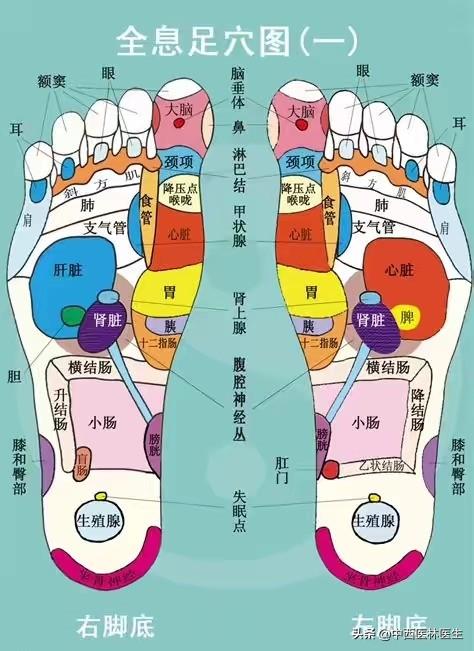
The tongue, as the only exposed internal organ of the whole body, also belongs to the holographic element of observation of the human body, and compared to external organs such as the hands and feet, he can more quickly and accurately reflect internal lesions。
Second, the tongue is related to the function of internal organs.
The tongue is directly or indirectly associated with the functions of the internal organs through the meridians。
For example, the tongue is the seedling of the heart. Whether the tongue is reddish in color and whether the tongue moves freely reflects the function of the heart.
Tongue moss is formed when stomach qi steams and transforms grain qi upward on the tongue, which is compatible with the function of the spleen and stomach in transporting and transforming, reflecting the function of the spleen and stomach.
In addition, the kidneys store essence in the fluid as saliva, and the spleen in the fluid as saliva, both of which are components of the fluids, relate to tongue moistening and dryness, reflecting the functions of the spleen and kidneys.
In conclusion.Changes within the human body, the internal organs, viscera and internal organs, blood and qi and blood, fluid surplus and deficit can be reflected in the tongue.
After understanding the mysteries of the tongue, let's take a look at what TCM tongue diagnosis actually looks for.
A look at the normal tongue. As a Chinese medicine practitioner, the first thing you need to know is what a normal tongue looks like, it usuallyThe performance of the tongue body is soft, flexible movement, light red color, fat, thin, old and tender moderate, tongue coating thin white moist, uniform particlesFor example, the picture below shows the normal tongue of an adult.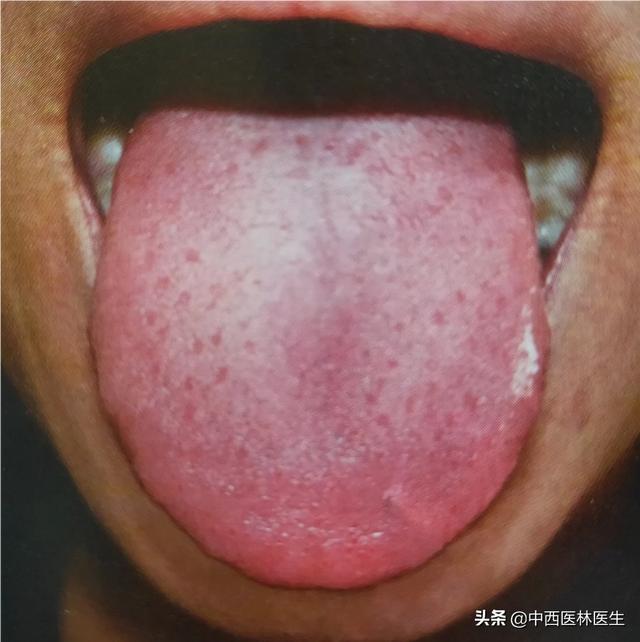
Secondly, look at the texture of the tongue.Looking at the quality of the tongue also includes looking at the four aspects of the spirit, color, shape and appearance.
1. Look at the tongue God. Tongue God is mainly to see whether the tongue is Wing and or withered. Wing isFinger tongue movement is flexible, tongue color is red and glossyThis tongue will heal quickly even if there is a problem with it; proud talk
proud talk
wither meansInflexible tongue movements, dry and dull tongue textureA withered tongue generally indicates a more serious condition and a poor prognosis.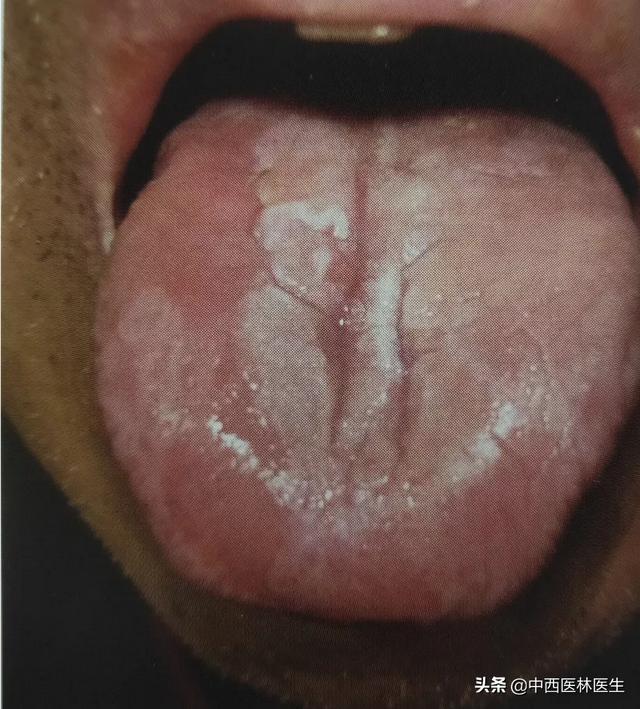 withered tongue
withered tongue
2. Look at the tongue color. The color of the tongue can generally be divided into pale white, pale red, red, reddish, purple, green several kinds, whichReddish color is the normal tongue colorThe rest of them represent some problems in the internal organs of the body. For example, the green tongue, that is, the tongue color as the skin exposed "green veins", all without red.It usually represents cold condensation and yang depression, yang deficiency and cold condensation, or bruises in the body. bluish tongue
bluish tongue
3. Look at the shape of the tongue. It means to look at the shape of the tongue, including old and young, fat and thin, cracks, teeth marks, manicures and other changes. For example.Tooth-marked tongue means that there are traces of teeth marks on the side of the tongue, which is mostly caused by the inability of spleen deficiency to transport and transform water-dampness, and the prevalence of dampness in the body due to spleen deficiency.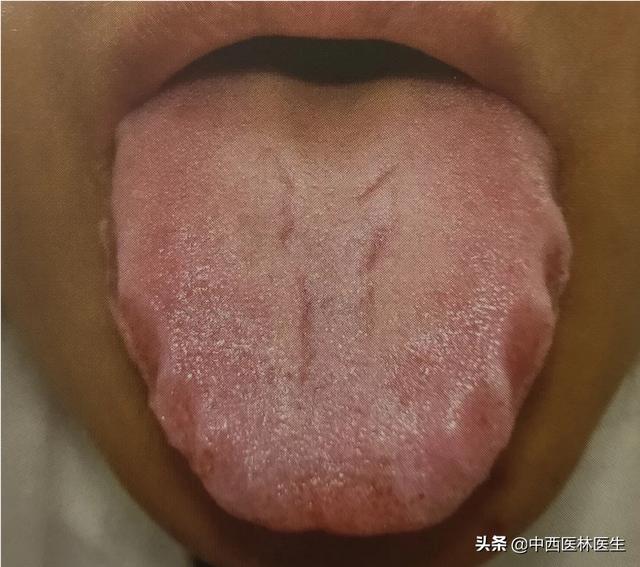 tongue with tooth marks
tongue with tooth marks
4. Look at the tongue.Tongue posture refers to the state of the tongue when it is in motion. Normal people have sensitive tongue movement and are able to stretch freely.However, when a person is sick, he or she may show a strong, weak, shortened, trembling, or crooked tongue. For example, a crooked tongue, meaning that the tongue is tilted to one side and the tongue is not straight, is most often seen in a stroke or the precursor to a stroke. twisted and disproportionate tongue
twisted and disproportionate tongue
Third, look at the tongue.Tongue moss is formed when stomach qi vaporizes on the tongue, and it reflects the prevalence of stomach qi.You can know the depth of the disease by observing the thickness of the tongue coating, the surplus or deficit of the body's fluids by the moistness of the tongue coating, the wetness of the tongue coating by the putrefaction of the tongue coating, and the prevalence of qi and yin and the development trend of the disease by observing the looseness of the tongue coating, peeling off the tongue coating, and the presence of roots or no roots.
For example, map tongue is an irregular large piece of tongue moss off weak, the edge of the thick moss clear boundaries, shaped like a map, he is a kind of peeling off the moss, is due to the lack of stomach qi, reflecting the spleen and stomach deficiency is serious.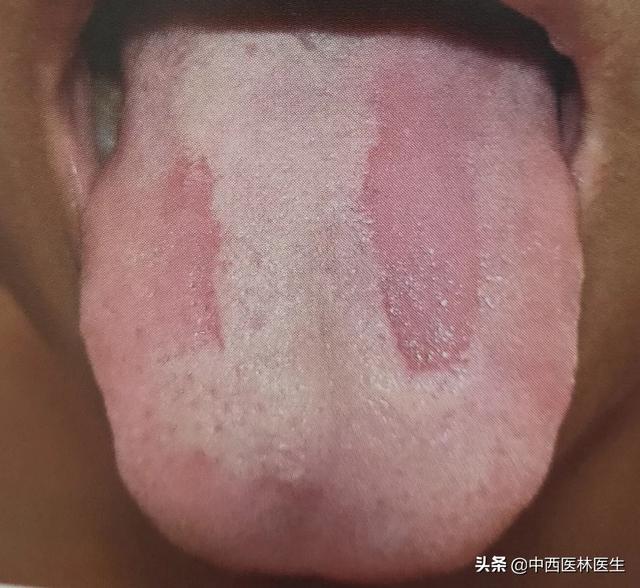 tongue of atlas
tongue of atlas
Tongue diagnosis also includes looking at the sublingual collaterals, but the above three aspects are the main components of tongue reading in TCM, which I hope will be helpful!
Tongue-examination is a method by which a doctor diagnoses a disease by observing the changes in a patient's tongue coating and tongue texture, which is also a feature of Chinese medicine diagnosis.
In Chinese medicine, the tongue can reflect the changes of the five viscera and six bowels to a certain extent, such as the tip of the tongue reflects the lesions of the heart and lungs, the tongue reflects the lesions of the spleen and stomach, the root of the tongue reflects the lesions of the kidneys, and the edge of the tongue reflects the changes of the liver and gallbladder. Through the observation of each part of the tongue's specific color, shape, shape of the tongue, the quality of the moss, the moss color changes, so as to carry out the dialectic of the disease, the prescription, and the judgment of the disease transition, etc. The tongue can also be used as a tool for the treatment of diseases.
Then someone asks, how can the tongue reflect so many changes in the internal organs?
First of all, the tongue is the seedling of the heart, and the different lineage of the heart meridian of the hand shaoyin is the tongue itself. So the tongue can reflect the functional state of the heart.
The tongue is a candidate for the spleen, and the foot-taiyin spleen meridian is connected to the tongue and scattered under the tongue, and the tongue is the main sense of taste in the mouth. The tongue is endowed with stomach qi, so the tongue can reflect the functional state of the spleen and stomach.
In addition, the feet of the syncopal liver meridian complex tongue this, the feet of the lesser yin kidney meridian through the throat, hostage tongue this, the lung system up to the throat, and the root of the tongue is connected to the other visceral organs and tissues, by the meridians are connected to the tongue are directly or indirectly produce a relationship, so the visceral pathology is inevitably through the body of the meridian qi and blood changes and reflected in the tongue.
This is why Chinese medicine emphasizes tongue diagnosis.
I'm Dr. Yu Chunquan, who insists on popularizing medical knowledge for everyone, and it's not easy to code, so if you agree with me, please help me to pay attention or like me, and you can also forward it to your family or friends to watch this article, thank you!

Doctors nowadays don't know how to see patients! Even the minimum of Chinese medicine look and smell these basic knowledge do not understand will not! Chinese medicine doctor let you stick out your tongue to see belongs to look at the diagnosis is also called tongue diagnosis, is to see the color of your tongue moss yellow and red and white and thick and thin greasy, to identify medical treatment!

Chinese medicine doctors let the patient stick out his tongue, he is trying to through the patient's tongue, to determine the patient's body of positive and negative, distinguish the nature of the disease, the depth of the disease position, the situation of the disease in and out of the estimation of the prognosis of the disease and so on. This is of great significance in diagnosing the patient's disease and guiding the correct use of clinical medicine. But how does a doctor diagnose a patient's condition through tongue diagnosis? Specific tongue diagnosis is as follows:
I. Tongue and internal organs corresponding parts
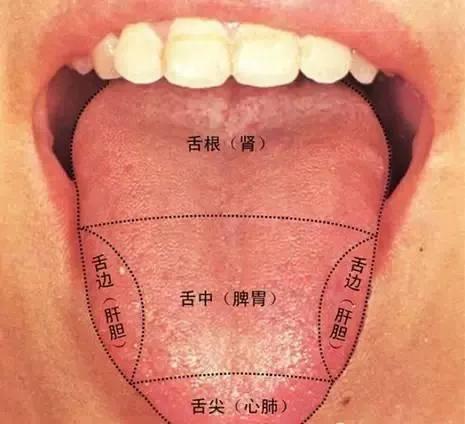
In Chinese medical diagnosis, the tongue is divided into five sections. The tip of the tongue is the heart and lung area, the middle of the tongue is the spleen and stomach area, the sides of the tongue are the liver and gallbladder area, and the root of the tongue is the kidney area. These five parts belong to determine the site of the lesion (internal organs) used.
In addition to the five parts (TCM diagnostics), it is also divided into the tongue body and moss texture and color. The condition is determined by the different changes in the tongue body and moss.
Second, the tongue body includes: tongue color, tongue shape, tongue posture. Through observation, the patient's condition can be known.
1、Tongue color
1) Reddish color-Qi and blood harmonization (normal: at the beginning of exogenous diseases)
2) Light white--Qi and blood deficiency; yang deficiency.
3) Red tongue--Solid heat; internal disturbance of Yin deficiency.
4) Lowering the tongue--Excessive heat in the li, Yin deficiency and fire.
(5) Purple tongue-- Poor circulation of qi and blood. This can be seen in conditions such as congenital heart disease and poisoning.
2. Tongue shape
1) Old and young-Disease deficiency (old - solid evidence; young - weak evidence)
2) Fat and thin
plump--Spleen and Kidney Yang Deficiency, Water-Dampness Internal Stagnation
rosy and chubby--Damp-heat in the spleen and stomach; phlegm-dampness within the body; alcohol toxicity upward.
reddish-red swelling--Heat in the heart and spleen, heat and toxin.
pale and thin-Qi and blood deficiency -Deficiency of qi, blood and yin.
capital of the Jin State during the Spring and Autumn Period (770-475 BC)-Yin deficiency and fire - Deficiency of Qi, Blood and Yin fluid, loss of tongue moistening.
3) Spot stabbing- - Visceral heat pole; blood heat (depending on its division of the viscera, that is, look at the tongue division of the five parts, the corresponding viscera. This can do accurate positioning.)
4) Cracked tongue
pale and cracked--Blood deficiency.
reddish-red and cracked--Heat and fluids.
Pale white, fat and tender edges with teeth marks and cracks--Spleen deficiency and dampness immersion.
5) Tooth marks
Tongue pale and fat with teeth marks--Cold and damp congestion; Yang deficiency and water retention.
Tongue pale red with teeth marks--Spleen deficiency; Qi deficiency.
Red, swollen tongue with teeth marks--Damp-heat phlegm congestion.
6) Sublingual collaterals-Excessive length, excessive thickness, varicose into a nodular, reticular form -Blood stasis.
3. Tongue posture
1) Impotence and weakness--Injury to yin; deficiency of qi and blood.
2) Tough--Heat enters the pericardium; high fever injures the fluids; wind and phlegm block the collaterals
3) Skewed-- Stroke; dark prickly heat; stroke gas sign.
4) Tremor--Liver wind internalization (heat; hyperactivity of yang; yin deficiency; blood deficiency)
5) Spit and fiddle with your tongue-Heart and spleen deficiency, seen in children with congenital stupidity.
6) Shortening--Critical condition. Cold congeals the sinews; Qi and blood are weak; heat injures the fluids; phlegm-dampness obstructs the channels.
Third, the color and shape of the tongue.
Look at the tongue, mainly want to be clear about the severity of the disease, is belong to the cold, heat, solidity, yin and yang surface of the kind of situation.Our normal human tongue image is - pale white tongue, thin white moss. The tongue color is light red and sharp, the tongue texture is moist, the tongue body is moderate in size, soft and flexible, and the tongue moss is uniformly thin, white and moist.This means that a normal person's tongue is - thin white moss.
The tongue is divided into texture and color
1. Tundra
1) Thickness:Indicates the depth of the disease.
Thin moss (see bottom)--The disease begins at the surface; the stomach qi is not yet injured.
Thick moss (not bottomless)--Evil prevailing in the interior; phlegm-dampness in the interior; food accumulation.
2) Moistening:Indicates the surplus and deficit of fluids and their transportation.
润苔--The fluids have not been injured.
mossy--Dampness; phlegm-drinking.
燥苔--Dry evidence, the fluids have been injured; yang qi has been suppressed.
糙苔--The fluid is more injured; the evil of filth is coiled in the middle Jiao.
3) Putty rot:dampness in the spleen and stomach
laver--Dampness; food accumulation; phlegm.
Thunberg's geranium (Geranium thunbergii)--Spleen deficiency and dampness; food accumulation.
Phellodendron amurense (species of fern)--Cold-dampness internal obstruction; phlegm.
Grateloupia filicina (species of red alga)-Dampness and heat upward (Stomach qi not yet weakened)
yellowish greasy moss--Damp-heat; phlegm-heat; dampness within the department.
mossy--Food accumulation in the stomach and intestines; dampness-heat internalization.
pusillanimous membrane--Internal carbuncle or internal knot of evil poison.
4) Peeling Moss-- Deficiency of Stomach-Qi; depletion of Stomach-Yin; deficiency of Blood and all.
5) True or False:Used to differentiate the depth of the condition.
True moss is seen in the early and middle stages of the disease--Stomach qi congestion and solidity, deeper and more serious disease.
new disease seen with fake moss (TCM)-Evil and turbidity are gradually gathering, and the condition is mild.
a long illness reveals the true state of the moss (idiom); a prolonged illness reveals the true nature of the disease-Stomach qi is still present.
False moss seen in long term illnesses-Stomach qi is lacking and the condition is critical.
2. Tundra color.
1) Thin white moss
润- - Normal: first signs of surface disease (wind-cold-dampness); mild internal disease; Yang deficiency with internal cold.
干--Wind-heat epiphenomenon.
滑-External cold and dampness, Yang deficiency of the spleen and kidneys, and internal accumulation of water-dampness.
2) Thick white moss
腻--Dampness and turbidity internal obstruction; phlegm and drink internal storage; food accumulation
干--Phlegm, turbid dampness and heat within the body
coir (zoology)--Dampness combined with heat toxins --Brown cracks --Dry heat injures fluids
White moss can be seen in surface, cold, and damp conditions, as well as in heat.
2、Yellow moss
1) Yellowish moss- - - Thin - Wind-heat surface evidence; wind-cold transforming heat into the interior;
2) Greasy--Dampness-heat or phlegm-heat; deep yellow moss from food stagnation and decomposition.
3) Burnt yellow moss, dark yellow moss - dryness-Evil heat injures the fluids, dryness and solidity of the internal organs.
4) Light yellow slip--Yang deficiency, cold and dampness turning into heat; deficiency of qi and blood compounded by dampness and heat
Yellow moss is seen in the internal evidence, heat evidence, the more yellow the moss, the more severe the heat.
3. Gray and black moss
1) White, grey and black moss(Tongue pale, fat and tender) - Yang deficiency, cold and dampness; phlegm-drink internalization.
2) Yellowish, greyish-black moss--Dampness and heat are internalized and do not resolve over time.
3), scorched black dry moss--Heat is extreme and the fluids are withered.
4) Yellow, red and black moss--Moldy Sauce Moss --Dampness turns into heat or dampness-heat entraps phlegm.
Grayish-black moss is a severe case of internal heat and internal cold.
Tongue diagnosis is an important part of Chinese medicine diagnosis. The earliest appeared in the Yuan Dynasty "Ao's typhoid gold mirror book", the beginning of only a secret outflow, some doctors are also private, as a personal diagnosis of the disease of the trick, secret, so that learners of medicine known to very few. To the Ming Dynasty, by Xue Lizai to bring the engraving, tongue diagnosis is widely spread all over the world, and has been valued by successive generations of medical doctors.
What is the way of healing?Jin Yuan four big Li Dongyuan, once asked, to him to learn medicine Luo Tianyi "You come to learn to find money medical? Learn to preach medicine?" Meaning "Do you want to learn to earn money as a doctor? Or do you want to learn to be a doctor who spreads the word of medicine?"
Luo Tianyi replied, "Also preaching."
It means that a healer not only has the responsibility to heal the sick and support his family, but also has the obligation to spread and promote the art of healing.
I would like to thank the teachers who taught me medical skills and those who, on the Internet, selflessly spread the knowledge of Chinese medicine. It is with your existence that the medicine of our motherland will be passed on from generation to generation and will never die. At the same time, I would also like to thank all the enthusiastic netizens for spreading the word, so that Chinese medicine can take root and germinate on the soil of the motherland!
TCM has you sticking out your tongue, and your tongue-stretching position affects what I want to see as a doctor.
How do you look at your tongue when you want to see it? And in what state should you look at it? What do I need to pay attention to when I look at it? I will give you a short and simple explanation.
First of all, the first point to pay attention to is to look at the tongue under the sunny natural light; try to open the mouth normally in a relaxed state, tilt the head a little bit and then stick out the tongue slowly, so as to facilitate our observation of the changes of the tongue. Speaking of sticking out the tongue, there are many patients who come to see me to stick out the tongue vigorously, in fact, this practice is not right, which will easily make the tongue full of blood circulation at once, causing changes in color and amount of moss.
Secondly, the order of the tongue is to view from the tip of the tongue, tongue in the tongue, tongue side and then to the root of the tongue; different parts of the tongue area corresponding to the different internal organs, the tip of the tongue on behalf of the heart, tongue on behalf of the liver and gallbladder, tongue on behalf of the middle of the spleen and stomach, and the root of the tongue to mark the location of the kidneys; such as, look at the tip of the tongue, if the tip of the tongue is particularly red, there are sores, ulcers appear to be the heart is more exuberant fire is caused by.
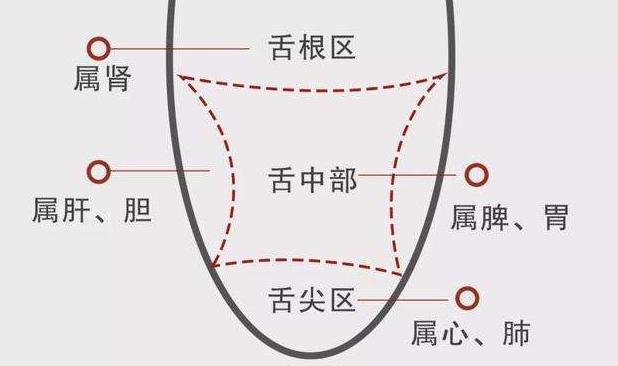
Observe the tongue texture first, which is the change in our tongue color, and then observe the change in the tongue coating. When looking at the tongue, it is more accurate to look at it in natural light in the morning than at night.
Remind one thing, many people have the habit of getting up in the morning to scrape the tongue, that is, to remove a layer of white moss on the surface of the tongue, if you want to find a Chinese medicine practitioner, it is best not to scrape the tongue in advance, so as not to cover up some of the facts, the true thought, affecting as a doctor we observe the state of the different organs, qi and blood, the presence of a potential danger of disease.
A simple action of looking at the tongue in Chinese medicine actually contains a wealth of knowledge. The day before yesterday, my cousin asked me to prescribe Chinese medicine because of chronic gastritis, I let her stick out her tongue to have a look, I said she had stomach fire, poor appetite, she said she didn't tell me how to know? Let's take a brief look at the tongue.
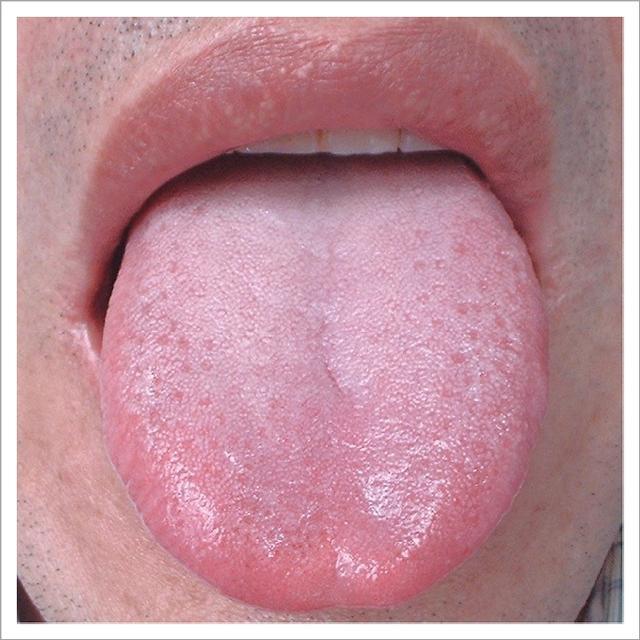
First, look at the tongue coating and tongue texture. Chinese medicine says look at the tongue, not simply look at what your tongue looks like, mainly to look at the tongue color, thickness, and tongue texture is pale, bruises purple or red red? There is a lot to learn here, and those who don't understand it will find it very mysterious. Through the tongue, it can help to determine whether the person is a real evidence, or false evidence; cold body or hot body. To put it simply, most people with red tongue and yellow and greasy tongue coating belong to damp-heat constitution; while most people with pale white tongue and white tongue coating belong to cold. Then prescribe medicines in combination with the patient's other symptoms.
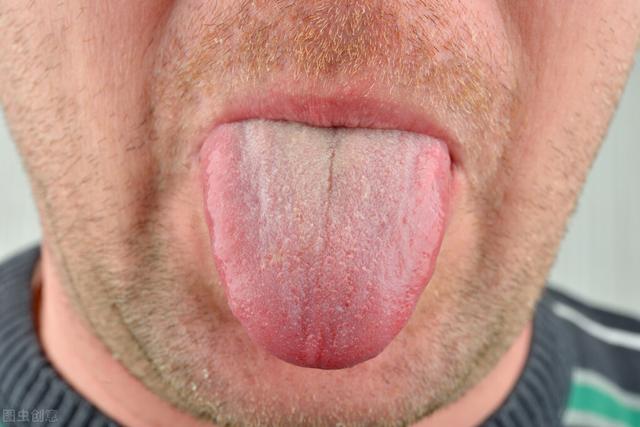
Secondly, each region of the tongue can represent the health condition of different parts of the body. The two sides of the tongue are for the liver and gallbladder, the tip of the tongue is for the heart, the anterior body of the tongue is for the lungs, the middle of the tongue is for the spleen and stomach, and the root of the tongue is for the kidney. Abnormalities in different areas of the tongue correspond to abnormalities in different parts of the body. For example, if the tip of the tongue is red and red with awns, there is heart fire.

Third, the tongue reflects a person's constitution and lifestyle. For example, the tongue red moss yellow greasy people, more dampness and heat, usually more fat, sweet and greasy preferences. People with pale moss purple tongue, usually more afraid of cold. Tongue dark, the bottom of the tongue tendons angry people, the body may have bruises, or has suffered a major trauma. People with obvious teeth marks on the side of the tongue may usually have a poor appetite. So through the healthy tongue, you can initially judge a person's health status.
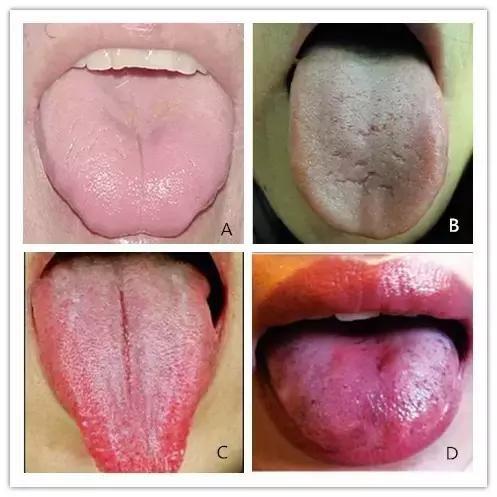
For more health knowledge, you can follow @杏林锺聲
A little health tip a day for your health!
This question and answer are from the site users, does not represent the position of the site, such as infringement, please contact the administrator to delete.